Cedar Heights Clay
Articles
In the beginning, Oak Hill was formed by two icebergs creating a valley where the Village of Oak Hill began. The territory was surrendered by the Indians by treaty in 1795. In 1817 the land was inhabited by farmers and a year later, Welsh families. To this day Oak Hill’s 4th largest population is of Welsh descent. During the Civil War confederates, Morgan's Raiders, camped in Oak Hill where one of the more prominent houses, still standing, was used by the Underground Railroad as a hospital.
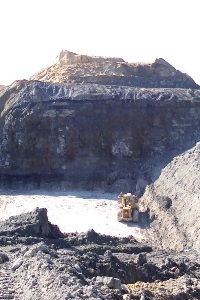 The Scioto & Hocking Valley railroad came to Oak Hill in 1853. Oak Hill had a wealth of industrial refractory minerals, producing a profound influence upon the Village of Oak Hill. The furnaces were in demand for their iron for railroad car wheels, heavy machinery, the gunboat "Monitor", and cannons. Charcoal, iron ore, and limestone was abundant in Oak Hill. Fireclay, one of Resco’s mined minerals, was discovered in Oak Hill in 1872. The first “firebrick” plant was built in 1873 shipping their first load in September starting the refractory industry in Oak Hill. The brand name "Oak Hill" was given to brick used widely in steel production. Initially, the bricks were made by hand and fired in a coal-fired kiln until the first brick press was installed in 1920. The industries became the major source of employment in Oak Hill and the surrounding areas.
The Scioto & Hocking Valley railroad came to Oak Hill in 1853. Oak Hill had a wealth of industrial refractory minerals, producing a profound influence upon the Village of Oak Hill. The furnaces were in demand for their iron for railroad car wheels, heavy machinery, the gunboat "Monitor", and cannons. Charcoal, iron ore, and limestone was abundant in Oak Hill. Fireclay, one of Resco’s mined minerals, was discovered in Oak Hill in 1872. The first “firebrick” plant was built in 1873 shipping their first load in September starting the refractory industry in Oak Hill. The brand name "Oak Hill" was given to brick used widely in steel production. Initially, the bricks were made by hand and fired in a coal-fired kiln until the first brick press was installed in 1920. The industries became the major source of employment in Oak Hill and the surrounding areas.
Cedar Heights History
Cedar Heights Clay was organized in 1924. The business has expanded to be one of the foremost producers of clays. Most mining, in the early years, was done by manual labor with mules and oxen. Deep in the rolling hills of southeastern Ohio lies some of the best bonding, refractory, and stoneware clays. The Oak Hill clays from the Lower Kittanning seam have been mined in this region since the early 19th century. This unbroken layer of clay starts in Oak Hill.
The rough crop-line of our clay mines extends in a semi elliptical pattern, arching east, where it got its name, to the Kittanning, Pennsylvania region. In earlier times strong, high plastic clay, our bonding clay has a PCE of 31+, making it well suited to produce refractory wares. In more recent years our lower plasticity and lower PCE clays dictate our mining activity. We categorize our refractory clays as Bonding, Goldart, and Fireclay AS.
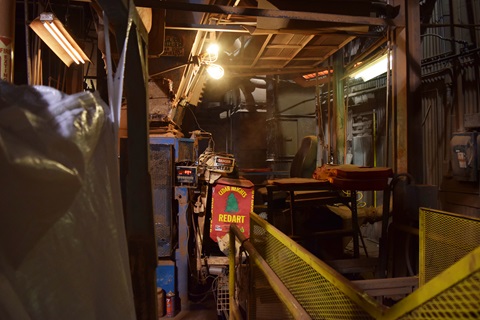 Clays are blended to produce a variety of product ranges suited to the industries served, agricultural, foundry, refractory, filler, or ceramic.
Clays are blended to produce a variety of product ranges suited to the industries served, agricultural, foundry, refractory, filler, or ceramic.
Fireclays are coarse in nature, with "tooth", whereas stoneware clays are smooth and plastic and offer vitreous properties when fired. Fireclay can be rendered smooth and plastic by milling, stoneware clay will retain its tooth by minimizing the processing. Turning one type of clay to the other can be a simple feat with sound planning.
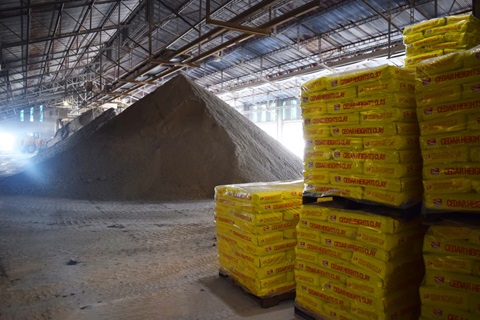 1953 we started producing "Redart" to replace Uranium which was widely used in the ceramics world. This clay is our low fire ceramic product used widely in tile, sculpture, modeling clays, and various industries.
1953 we started producing "Redart" to replace Uranium which was widely used in the ceramics world. This clay is our low fire ceramic product used widely in tile, sculpture, modeling clays, and various industries.
1966 we purchased our second plant in Oak Hill. This plant manufactures clay for our live loading pneumatics, and our Air floated light cream-buff colored clays.
What is the Process of Mining Clay? The Oak Hills Process
In 1984 Cedar Heights owned or controlled over 2500 acres of land operating 4-5 pits at any given time, thus making our ratio of specific clay easier to maintain. Since Resco purchased Cedar Heights Clay in 1984, roughly 1200 acres of reclaimed (previously mined and re-seeded) land has been sold. We currently have only one active, permitted pit and 3-4 other proven areas for future mining.
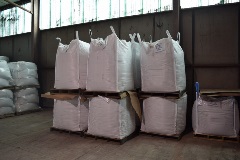 The beginning of the mining process requires an industrial mineral permit from the State of Ohio. Bonding, held by the State of Ohio, is required to cover the affected or to be affected areas to ensure the land will be reclaimed, not abandoned. Once the pit has been permitted, we create a mining plan for the logistics of the mining process.
The beginning of the mining process requires an industrial mineral permit from the State of Ohio. Bonding, held by the State of Ohio, is required to cover the affected or to be affected areas to ensure the land will be reclaimed, not abandoned. Once the pit has been permitted, we create a mining plan for the logistics of the mining process.
The area is usually timbered and sold to assist with future expenses. A haul road is planned and established. Overburden is removed with a D-11 bulldozer and/or blasting, the depth of overburden range is typically 25' to 110'.
Overburden is moved to a pre-determined area; topsoil piles are made, and seeded, to be used for reclamation after mining is completed. Overburden is removed to expose the top of the clay seam then the clay is cleaned and taken in "lifts" typically 2' in each lift or layer of the seam.
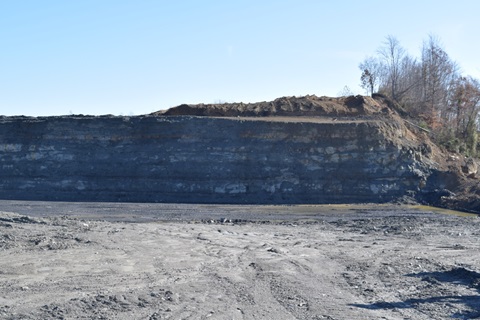 Clay is very hard and compacted, the dozer operator cross rips the channels with long ripper teeth breaking the clay apart into manageable pieces to be loaded in dump trucks. The empty pit shows the entire clay sequence. As we make our next pit, the new overburden is pushed into the now empty pit. This process eliminates double handling of the overburden and allows ease of mining.
Clay is very hard and compacted, the dozer operator cross rips the channels with long ripper teeth breaking the clay apart into manageable pieces to be loaded in dump trucks. The empty pit shows the entire clay sequence. As we make our next pit, the new overburden is pushed into the now empty pit. This process eliminates double handling of the overburden and allows ease of mining.
Mining typically begins in April or May. Before mining begins the pit must be dry and any residual winter water must be pumped out. On average Resco mines 28,000 to 32,000 tons each year affecting only 3-5 acres of land annually. Once mined out, we conduct the reclamation process to restore the land to as good as or better than it was. This process is overseen by the Ohio Department of Natural Resources. Grading, top cover dressing, seeding, fertilizing, and mulching must all be approved at every level of the reclamation process. Once restored the land can be sold for hunting, pasture for grazing livestock or hay, and if approved for building.
Clay stockpiled and stored inside the plants and the clay sheds by layer. Clay is crushed, artificially dried, and milled to numerous sizing requirements then shipped in bulk pneumatic or dump trucks, 50# bags, various batch weights in super sacks. We maintain adequate custom stock items for immediate or next-day shipments both domestic and internationally. For steel mills, we make mixes for pneumatic tank trucks and super sacks. Our product trade names are Bonding Clay, Fire Clay, Fireclay AS, Goldart, Redart, Roseville, and Salt Lick.
We carry resale clay products "from numerous suppliers and Corelite Kiln Shelves from Estiva in Brazil. Our products and our resale items make Resco a one-stop shopping experience.
